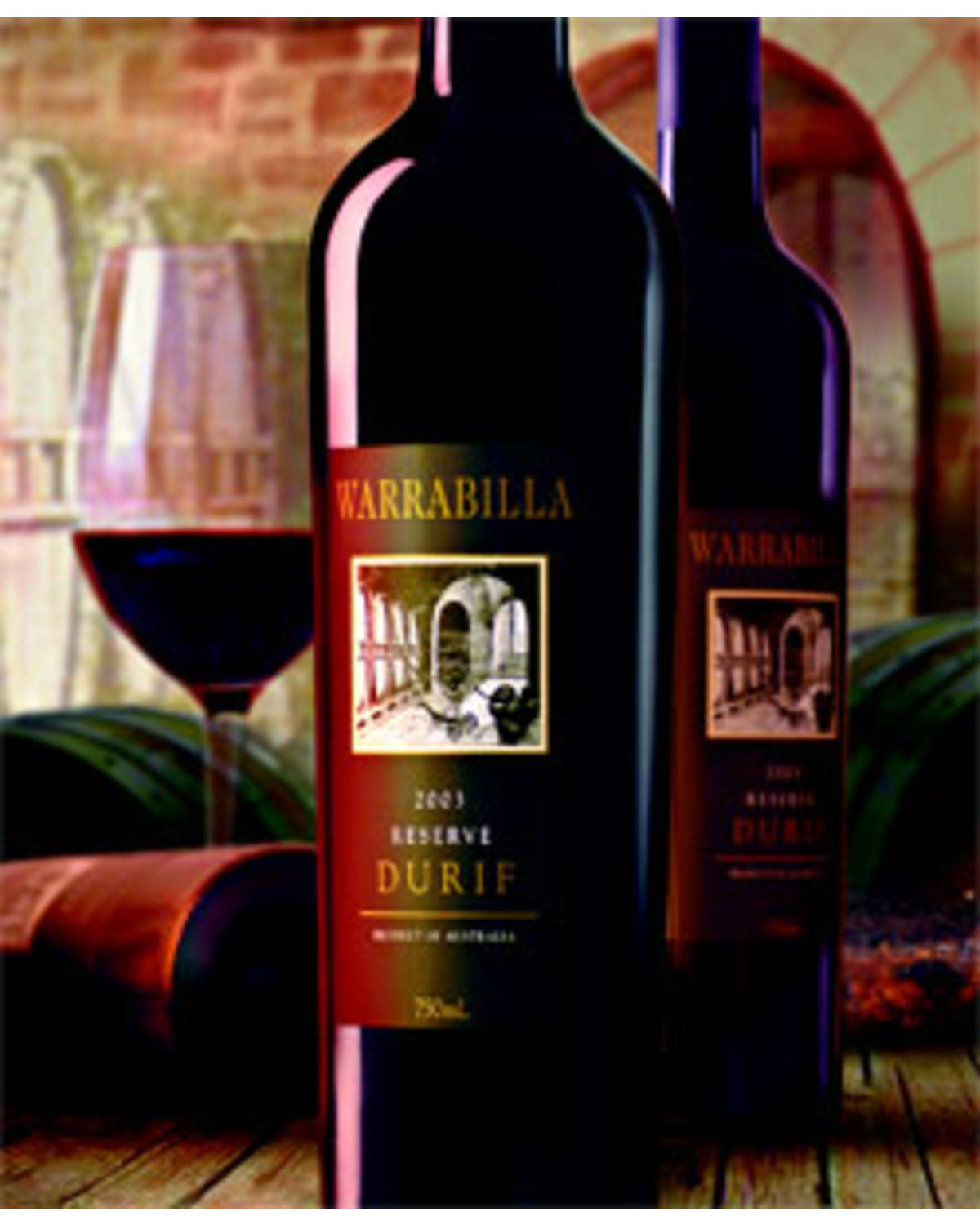
- 98
2003 Warrabilla Reserve Durif
WARRABILLA: A VITICULTURAL MONUMENT
Warrabilla was born as a dangerous liaison between an old fashioned county Squire, whose ancestry parallels the history of winemaking in Australia, and contemporary business ambitions. GEORGE SUTHERLAND SMITH was the patriarch of ALL SAINTS, as his forbears had been since its founding in 1864. All Saints' famous castellated winery building was modelled on the Castle of Mey in Scotland as a monument to the traditions of the Grand family. The Sutherland Smith clan ruled Rutherglen like some feudal kingdom, and by the late 1970’s had become Rutherglen’s largest producer. Its holdings of ancient fortified wines were legendary, but the company needed to be revitalised. George Sutherland Smith, whose equity in the enterprise was 30%, introduced new partners who borrowed against the business in order to expand with the times. The new management team re-launched the brand but failed to capture the markets imagination, finally losing the entire enterprise to the receivers. The Sutherland Smith family were devastated, but none more so than son Andrew who was chief winemaker at the time. The demise of the business left him embittered and with a deep sense of loss. Bill Chambers' generosity as a human being saved Andrew from total humiliation. After a three year stint with Chambers, Andrew emerged with a renewal of inspiration and energy: from adversity "Warrabilla" was to be born.
As a keen observer of the terroir of North East Victoria, Andrew realised that the trend of emulating the ‘lean’ cool-climate wines of the South, which had become fashionable in the region, was definitely not congruous with Rutherglen's sunny climate and unique terroir. Rather, Rutherglen naturally suited the development of massive flavours, particularly from Shiraz & Durif. These varieties offerred extraordinary colour, but also presented unripe tannins which could play havoc with the wines balance. High alcohol levels were also required before maximum flavour profiles kicked in, yet at the same time 'porty' reds were to be avoided (a seemingly paradoxical situation finding parallels with the big reds from Heathcote.) In particular, it is the Durif reds from Warrabilla that have spearheaded the Renaissance of Rutherglen and generated a new cult following. "Viticulturally," says Andrew, "Warrabilla is out there! Massive deep red soils, which hold the precious rain (what there is of it......we get a mere 18” annually compared to 28” the other side of town), four metre wide rows, single wire vertically shoot positioned trellises and a water regime that would make a camel complain. Simply speaking it is spectacular, the fruit regularly is some of the first to come off in the district, and at the ripest sugar levels. Colours are exceptionally dark even as fruit. It's all that exposure we get with our open canopies. It also means we get way less problems with rain: A) we don’t get much; B) it dries up quick!...Open three ton fermenters are regularly pumped over (with our fruit plunging is impossible..... there's no juice! I weigh 105 Kg and I can’t plunge them.) There is no run-off, no special high tech fermenters , just traditional techniques. Then into the 1950’s model airbag (better than the modern stuff) into tank to be adjusted, settled etc. Into oak puncheons for ten months, with a big oak budget, racked several times, blended and bottled. The yeast work is pretty damned hot, it has to be. Yeast strain, nutrition, timing and ferment temps are critical to getting these big wines dry. We are seen as being at the cutting edge of the big red style, with alcohols regularly tipping the 16% and sometimes even up to 17.5! For that the wines don’t seem hot or out of balance. Big wines can carry lots of oak, lots of fruit, lots of tannin, but they need the acid to balance the other." Warrabilla's wines are superbly structured vinuous monuments and reflect the enormous energy and determination of Andrew to reassert the Sutherland Smith's as a great Australian winemaking force.
These are great wines - superbly structured vinuous monuments that reflect the terroir as well as the energy of the wine maker.
Winemaker, ANDREW SUTHERLAND SMITH has a concise winemaking philosophy: "...simple viticulture, ripe fruit, good oak and with a long view of building a great wine." He considers the Warrabilla vineyard, "... a red winemakers dream, the best sites and soils in the region, combined with low yields." Australian wine writer JAMES HALLIDAY seems to agree, giving the winery a five star rating being only one of two table wine makers in the North-East to receive the accolade - the other is Giaconda.
"The palate is a monument of vinous construction."
Many wine lovers have never experienced the full power of Durif, a grape whose origins date back to 1888, where it was first propagated by Dr. Durif in the Rhone Valley. The vines have a propensity to produce high yields, which need to be carefully managed with crop thinning.
"This wine has a WOW factor."
TASTING NOTE: A complete saturation of colour - it would seem to be impossible to extract any more. Totally opaque black purple. The nose is perfumed, with classic morello cherry, vanilla, dark chocolate, spice and blackberry, followed by marzipan endnotes. The palate is a monument of vinous construction. Black ink, vanilla, plum, black pepper, spice, plum jam and liquorice flavours are counter-pointed by a very peppery back palate. The tannins are long, dry and are necessary for the mass of fruit that this wine carries. Very long aftertaste of liquorice, plum and vanilla.
Cellar 5-8 years (2010-2013)
Alc/Vol: 16.0%
